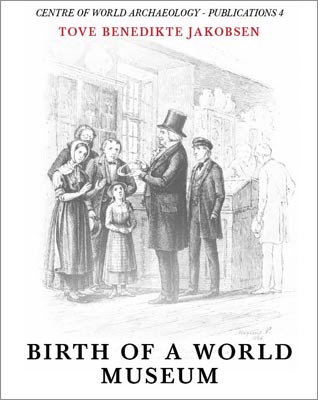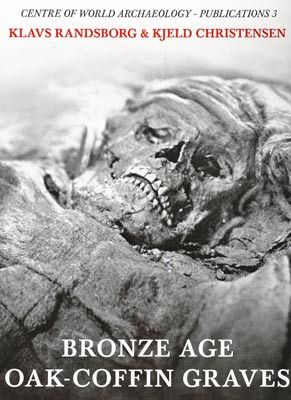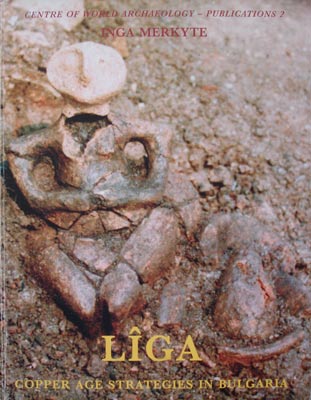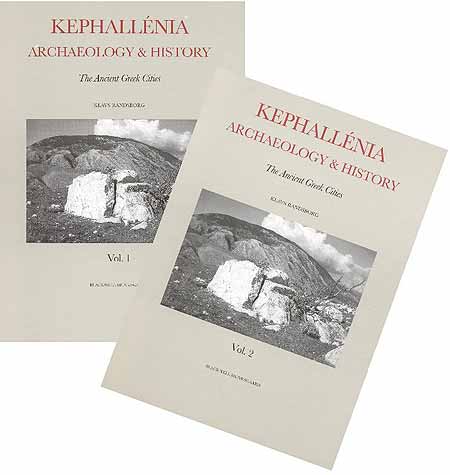The international journal and series ACTA ARCHAEOLOGICA was founded in 1930. Contributions are published in English, German, French, and Italian; ACTA ARCHAEOLOGICA is edited at CWA, Centre of World Archaeology (publishers Wiley-Blackwell, Oxford ).
Subscription information
Instructions for Contributors
Featured volumes:
Birth of a World Museum
by Tove Benedikte Jakobsen
in collaboration with Jan Holme Andersen & Christian Adamsen

The National Museum of Denmark has received its present name in 1892. However the roots go back to 1807, The Royal Commission for the Preservation of Antiquities. Although a product of the absolute monarchy its aim was to preserve the common historical heritage and make it accessible to the general public in a vivid, interesting and appealing way. T.B. Jacobsen has studied the protocols of the Commission and other archival material and has presented in a brilliant way the birth of the National Museum, now counting 200+ years. The monograph is richly illustrated containing 157 images, many already antiquarian, and tables.
ACTA ARCHAEOLOGICA 78:1, 2007 (Hardback only)
Bronze Age Oak-Coffin Graves: Archaeology and Dendro-Dating
by Klavs Randsborg & Kjeld Christensen
New dates of the famous burials, with novel archaeological chronology, and revolutionary news on society and cosmology.

”Randsborg’s contribution originated as an archaeological commentary on the dates, which grew into the small monograph now published containing eleven sections with two appendices, six tables, bibliography and extensive illustration. He covers a range of subjects, so the volume will interest readers with various specialities, not just chronology, and it complements current work on Bronze Age burials in Britain by Jo Brück, Alison Sheridan and Ann Woodward. “
Brendan O’Connor, 2007, The Prehistoric Society, UK
2005, Inga Merkyte, et al.
Lîga. Copper Age Strategies in Bulgaria

A concentrated presentation of the results of three international field-campaigns in NW Bulgaria (2000-2002). The Lîga project has focused on highly detailed and context orientated research, which allowed to achieve deep insight into Late Copper Age society, almost grasping the level of individual inhabitants of the investigated settlements. Furthermore, the project contributed with the crucial discovery of a Final Copper Age cemetery, evidence hitherto unknown in the area of the Krivodol-Sălcuţa-Bubanj Hum culture. Several technological studies are masterly interwoven into a catching story on daily life at the end of the 5th millennium BC, not least due to a very high degree of preservation, almost matching famous Çatal Höyük in Anatolia.
Contents. Summary. Summary in Bulgarian. About the project
2004, Klavs Randsborg
Inigo Jones and Christian IV. Archaeological Encounters in Architecture

The Gate Tower of famous Rosenborg Castle in Copenhagen is the starting point for a fascinating investigation of early 17th century Scandinavian architecture, where aesthetics and supreme architectural ideas blend with folk masonry traditions. Slicing through archive material and architectural drawings Prof. Klavs Randsborg uncovers the personal background of the colourful Danish King Christian IV (1577-1648), his ties with contemporary key figures of the European states, and demonstrates that architects like Inigo Jones might have been involved in forming Scandinavian royal architecture. True Da Vinci codes were employed in this particular aspect of Renaissance architecture! Watch how archaeological approaches are changing architectural perception.
Contents. Summary
Kephallénia. Surveys and field-work carried out across the northern, the eastern and the south-eastern parts of the island during 1991-1998.

Presented and edited by
Klavs Randsborg
With contributions by
Dorte Veien Christensen, Pernille Foss, Thomas Roland, Magna Køllund, Andreas Sotiriou & Thomas Vedesbøl
KEPHALLÉNIA. ARCHAEOLOGY & HISTORTY.
The Ancient Greek Cities, Copenhagen , 2002, Blackwell Munksgaard
Vol. 1: Catalogues & Plates, pp. 1-312
Vol.2: Texts & Illustrations, pp. 1-345
ACTA ARCHAELOGICA Vol. 73:1, 2
ACTA ARCHAEOLOGICA SUPPLEMENTA Vol. IV:1, 2 2002
Print ISSN: 0065-101X, Hardback only
The most important modern study of Kephallénia, the biggest Ionian island, known as a backstage for Odysseus of Iliad. The publication is the result of intensive and extensive surveys on the island during 1991-1998, covering the periods from Palaeolithic till present days, including four Greek poleis and Roman villas. A string of unexpected discoveries makes it both enlightening and useful reading. Investigation of sites with pebble industries, even a mining locality, poses intriguing questions regarding the abilities of early hominids to overcome water barriers. Detailed studies of Greek masonry, with a new chronology, provide ready-to-use tools for scholars working in the overall region. The find of several planned cities - a giant one never completed - is remarkable news. Read to find the answers to this and other puzzles.
|